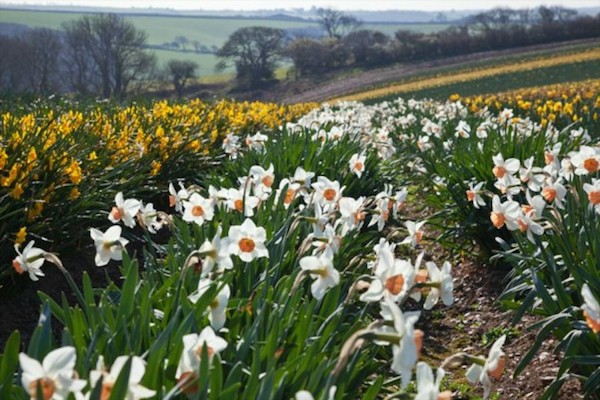They brighten our homes and herald spring. Grow them, visit them or simply enjoy them - you've got to love a daff While the wild daffodils of the Lake District, with their Wordsworth associations, might be the most well known, the largest concentration of daffodils in Britain is the so-called 'Golden Triangle' around the town of Newent and the villages of Dymock and Kempley, on the Gloucestershire/Herefordshire border.
While the wild daffodils of the Lake District, with their Wordsworth associations, might be the most well known, the largest concentration of daffodils in Britain is the so-called 'Golden Triangle' around the town of Newent and the villages of Dymock and Kempley, on the Gloucestershire/Herefordshire border.
Quite why the plant should be here in such huge quantities is impossible to say; at some stage the plant must have appeared and then had better opportunities to survive and spread than elsewhere. One reason is that since Medieval times the open woodland it prefers has been maintained through selective cutting and coppicing - both traditional management practices - creating conditions that are perfect for certain bulbs: wild daffodils, wild garlic and English bluebells. Deciduous woodland offers enough shade to suppress grass but enough light early in the year for the bulbs to shoot. Grazing, by sheep, cattle or pigs, also helped reduce bramble, the greatest enemy of bulbs.
Find the stems to suit your style
Every garden needs the morale boost of cheery daffodils in early spring - pick your favourites
THE CLASSICS - reliable, good all-rounders Carlton AGM (Large-cupped), Dutch Master AGM (Trumpet), Golden Rapture AGM (Trumpet), King Alfred (Trumpet), Saint Keverne AGM (Large-cupped)
THE PURISTS - white varieties Broomhill AGM (Large-cupped), Empress of Ireland AGM (Trumpet), Ice Follies AGM (Large-cupped), Misty Glen AGM (Small-cupped), Mount Hood AGM (Trumpet), Dickissel AGM (Jonquil)
For more, including THE OLDIES, THE SHORTIES, THE WILD THINGS, THE POT HEADS, and THE EARLY BIRDS, plus a guide to the best locations in the Golden Triangle, turn to page 82 of The Simple Things issue 21.
Buy now, or have a look through the digital sampler:

